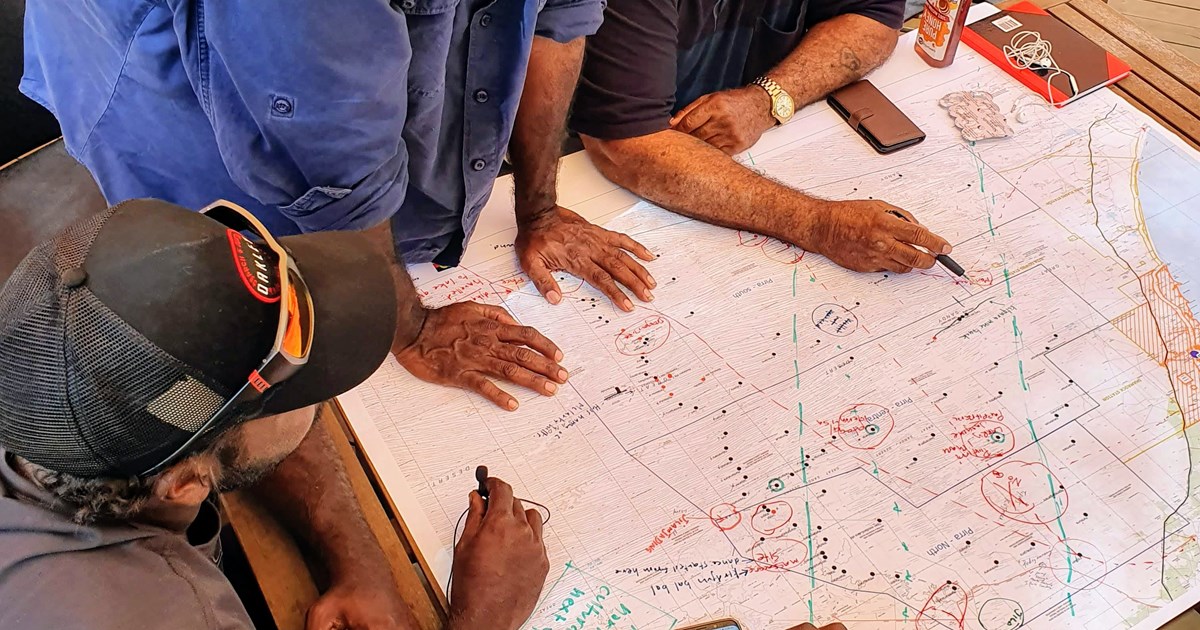Cultural Mapping

Indigenous groups are increasingly wishing to display their knowledge and values of country in culturally relevant and appropriate ways, often termed cultural mapping. In response to this growing need, ESS has become a leader in the delivery of cultural mapping tools and skills, facilitating and assisting clients to record, store and protect cultural heritage and knowledge of country, such as sites, stories, seasonal knowledge, traditional owner regions, and songlines/dreaming tracks (among others).
Using simple and user-friendly tools that we customise for the client, ESS works with groups to conduct cultural mapping on country (or in a desktop/office environment where trips to the field are not possible). Bulk transfers of existing cultural heritage datasets are also possible, where this information might have been previously captured by researchers or anthropologists. Once a record has been captured/mapped and exists with in the database, additional information (such as traditional stories, songs or dances, which can be recorded and attached in multimedia formats such as audio or video) can be recorded and added to these spatial features. All of this information is stored in a secure database with the appropriate permissions assigned based to each record, based on local cultural protocols, which ensures appropriate protection of the information.
Once entered into the database, cultural mapping records are often used to direct or enrich other operations, such as cultural site monitoring and maintenance, presentation to appropriate community members for education and cultural transmission, integration into ranger and cultural heritage operations.
Key features:
- Indigenous groups conduct cultural recording and mapping on their terms, which they may conduct independently and to their advantage.
- Traditional knowledge and cultural information can be recorded and situated in place.
- Highlights the spatial aspects of traditional knowledge and cultural information.
- Provides an alternative and culturally relative way of recording and displaying information.
- Provides the means (tools and skills) to continue to record cultural knowledge beyond the scope of the project.
Projects involving cultural mapping:
Uluru-Kata Tjuta National Park
Karajarri Traditional Lands Association
Njanjma Aboriginal Corporation
